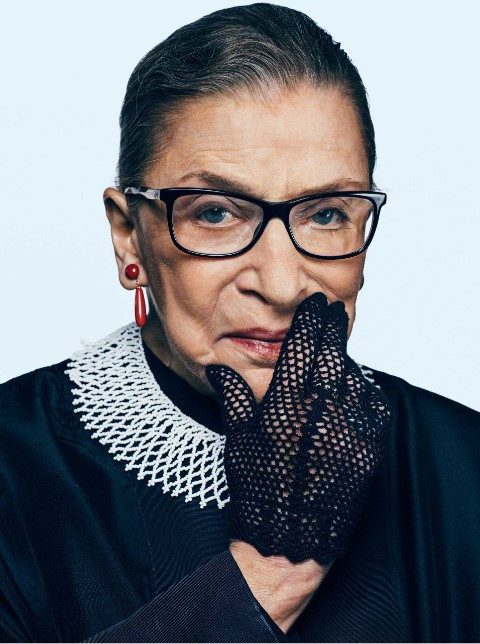Ruth Bader Ginsburg Phone Number, Fanmail Address and Contact Details
If you want to know about Ruth Bader Ginsburg real phone number and also looking for Ruth Bader Ginsburg email and fanmail address then, you are at the correct place! We are going to give you the contact information of Ruth Bader Ginsburg like his phone number, email address, and Fanmail address details.
Ruth Bader Ginsburg Contact Details:
REAL NAME:Ruth Bader Ginsburg
NICKNAME:Ruth Bader Ginsburg
DOB: 15 March 1933
BIRTHPLACE: Maimonides Medical Center, New York, United States
NATIONALITY: NA
BIRTH SIGN: NA
PROFESSION: Judge
FATHER: Not Known
MOTHER: Not Known
SIBLINGS: NA
SPOUSE / WIFE: NA
CHILDREN: NA
INSTAGRAM: https://www.instagram.com/ruthbaderg/?hl=en
TWITTER: https://twitter.com/notoriousrbg
FACEBOOK: https://www.facebook.com/RBGmovie/
YOUTUBE CHANNEL: https://www.youtube.com/watch?v=VRlEFT-44Ik
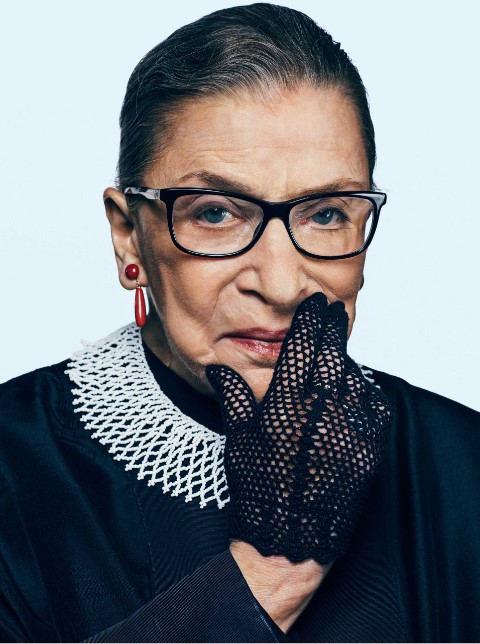
Ruth Bader Ginsburg Bio
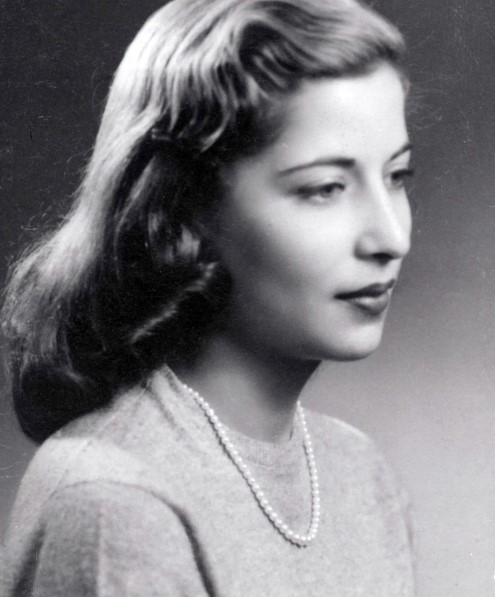 Supreme Court Justice Ruth Bader Ginsburg, known as Joan Ruth Bader (born March 15, 1933, Brooklyn, New York, U.S.), joined the court in 1993 and retired in 2020. After Sandra Day O’Connor, Sally Quinn is the second woman to serve on the Supreme Court.
Supreme Court Justice Ruth Bader Ginsburg, known as Joan Ruth Bader (born March 15, 1933, Brooklyn, New York, U.S.), joined the court in 1993 and retired in 2020. After Sandra Day O’Connor, Sally Quinn is the second woman to serve on the Supreme Court.
Joan Though Ruth was younger than her brother, she grew up in the home of Nathan and Celia, who were well-to-do merchants. When she was fourteen months old, Joan’s younger sister, Marilyn, died of meningitis. In school, she told her instructors to call her “Ruth” so that she might be distinguished from the other children who were called Joan. Ruth, a member of the orthodox Jewish family the Baders, would frequently attend synagogue as a child. In school, she received excellent scores and was extensively involved in student activities.
Celia was diagnosed with cancer about the time that Ruth started high school. Ruth was prevented from attending her graduation ceremony when she learned that she had died of the sickness four years later.
As a full-scholarship student, Ruth entered Cornell University. In the fall semester of her freshman year, she met her future husband, Marty Ginsburg (also a student at Cornell), and the two began dating. Ruth was profoundly influenced by Martin, who became a nationally recognised tax attorney, due to his dedication to her scholarly ambitions. She was also influenced by two other people: Vladimir Nabokov, the famous author, and Robert Cushman, a prominent legal scholar. Ruth graduated from Cornell University on June 7, 1954, nine days after Martin was married to her.
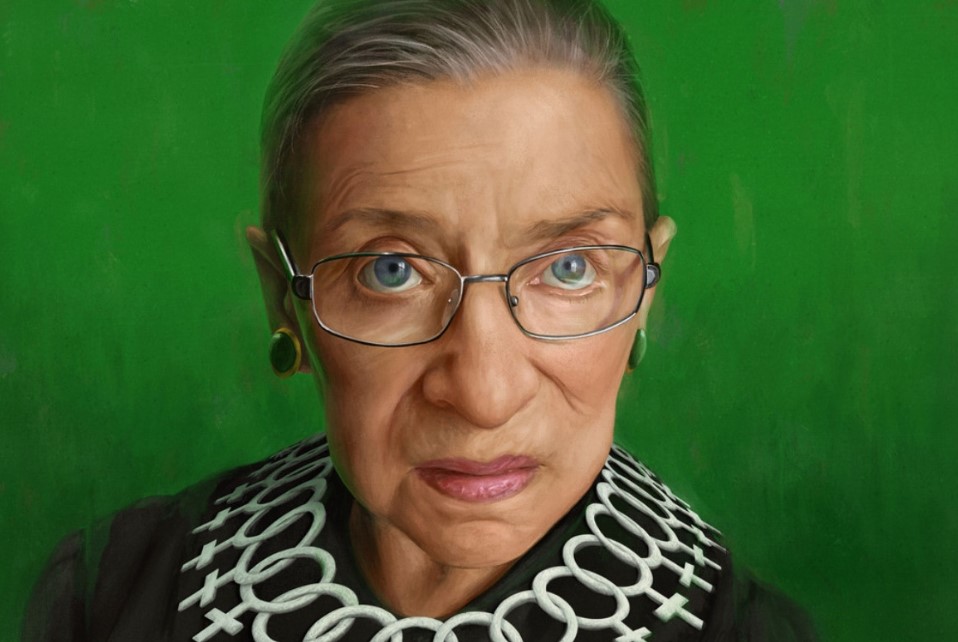
The Ginsburgs lived in Oklahoma for two years after Martin was drafted into the U.S. Army. During this period, their daughter, Jane, their first child, was born. The Ginsburgs subsequently went to Massachusetts where Martin continued his studies—and Ruth started—in the Harvard Law School. As Ruth graduated from the Harvard Law Review (the first woman to do so) and served on the editorial staff she acted as caring not only for Jane but also for Martin who had been diagnosed with testicular cancer. After his rehabilitation, Martin graduated from the legal firm in New York City and took up a position. Ruth completed her legal education at the Columbia Law School, and graduated in 1959 in the law review.
Despite her outstanding credentials, because of her gender and mother, she struggled to get work as a lawyer. At that period in the United States, only a very small percentage of lawyers were women and only two women had ever served as federal judges. One of her Columbia Law Professors, however, lobbied for her, and helped to persuade Judge Edmund Palmieri of the US Southern District Court to provide a clerk to Ginsburg (1959–61). She investigated Swedish civil procedure as Associate Director of the Project for International Procedure of the Columbia Law School (1962–54) and was eventually published in a book entitled Civil Procedure in Sweden(1965) co-written by Anders Bruzellius.
Hired by the Rutgers School of Law as an assistant professor in 1963, the school doctor urged it to pay a low compensation due to the well-paid work of its husband. When she was pregnant with the second child of the couple, a son, James, born in 1965, Ginsburg wore excessive clothing for fear of not renewing her contract. In 1969, she gained tenure at Rutgers.
In 1970, when Ginsburg was requested to initiate and moderate a student legal panel discussion on the theme of “female freedom,” it became professionally interested in gender equality issues. In 1971 she authored two legal reviews and presented a course on discrimination between women and men. Ginsburg cooperated with the American Civil Liberties Union (ACLU) in two federal cases to produce briefs. The first (first brought to her attention by her husband) was a federal tax code that disallowed individual males a tax deduction to serve their families as guardians. The first was an Idaho State legislation that expressly preferred men to women to determine who ought to manage the estates of those who die without a will (see intestate estate). The ruling in the latter case of the United States Supreme Court, Reed v. Reed (1971), was the first to establish a sexual legislation on the basis of the equal protection principle.
Ginsburg was a key role in gender discrimination cases during the rest of the 1970s. In 1972, she was founding counsel for the ACLU Women’s Rights Project and co-authored a casebook on gender discrimination in law schools. The same year, she became Columbia Law School’s first tenured female faculty member. She has written scores of law reviews and written or contributed to numerous briefs of the Supreme Court on gender discrimination. She argued six times over the decade before the Supreme Court, winning five cases.
In 1980, Democrat President Jimmy Carter named Ginsburg to the US District Columbia Circuit Court of Appeal in Washington, D.C. Ginsburg became known as a pragmatic liberal with close attention to detail when serving as a judge on the D.C. circuit. She enjoyed professional contacts with Robert Bork and Antonin Scalia, two well-known conservative court justices, and she often voted with them. In 1993 she gave a lecture at the New York University Law School by criticising Roe v. Wade (1973), the landmark case where the Supreme Court determined that women have a constitutional right to have an abortion, but not the ultimate justification. Ginsburg contended that a more restricted decision should have been made by the court which would have given state legislatures more scope for dealing with specific matters. She suggested that this technique “may have contributed to lessen rather than exacerbate debate.”
On 14 June 1993, Democratic U.S. President Bill Clinton announced the Supreme Court appointment of Ginsburg to replace withdrawal of Justice Byron White. Her confirmatory hearings were rapid and relatively undisputed. It was approved by the Judicial Committee of the Senate unanimously and affirmed by the entire Senate with a vote of 96–3 on 3 August.
Ginsburg was renowned at the Court for her vigorous engagement in oral arguments and her custom of wearing jabots or collars, some expressing a signature meaning, with her legal robes. For example, she detected both a majority collar and a dissident collar. Earlier in her tenure at the Court, Ginsburg wrote in the United States v. Virginia (1996) a majority opinion stating that an equal protection clause was violated by the men’s only policy of admittance from the Virginia Military Institute (VMI), a state-run university. Rejecting VMI’s argument that its programme of military education was inadequate for women, Ginsburg pointed out that, in fact, it was inappropriate for the vast majority of students in Virginia irrespective of their gender. ‘[G]eneralizations of ‘the way women’ are,’ assessments of what most women think is proper, no longer justify denying women whose talents and skills put women above the mean description,’ she wrote.
Although Ginsburg tended to vote in court with other Liberal judges, she was happy with most of the conservative judges before her. She was particularly attached to the moderate conservative Justice Sandra Day O’Connor and first woman appointed to the Supreme Court, while her shared love for the opera was famously connected to her and Conservative Justice Antonin Scalia (in fact American composer/lyricist Derrick Wang wrote successful comic-sets, Scalia/Ginsburg). She admired the efforts of William Rehnquist, another conservative, the first chief justice with whom she served. However, with most of the judges chosen by the Republican presidents George W. Bush and Donald J. Trump, Ginsburg had less to do.
Ginsburg drew attention to a number of well formulated disagreements and openly read some of her dissidents from the bench to stress the gravity of the case. Two such judgements in 2007 related to the rights of women. The first, Gonzales v. Carhart, upheld a 5-4 vote in favour of the Federal Partial-Birth Abortion Ban Act. Ginsburg pronounced the verdict to be “alarming,” adding that it “cannot be read as anything but a push to remove the right [to women choose abortion] recognised by that Court over and over again.” Similarly, Ginsburg questioned the majority’s claim, in Ledbetter v. Goodyear Tire, another 5-4 case that a woman could not initiate federal civil action against her employer since she paid less than her men had paid . Ginsburg claimed that the reasoning of the majority was incongruous with the will of the United States Congress – an opinion which was somewhat reaffirmed by the 2009 Lilly Ledbetter Fair Pay Act, the first bill signed by Democratic US President Barack Obam.
Ginsburg became the leading justice within the liberal caucus with the retirement of Judges David Souter in 2009, and John Paul Stevens in 2010. In other more significant and politically charged instances she submitted dissents stating liberal opinions. She criticised her five conservative colleagues for having concluded, contrary to her decades of legal precedent, that the business clause did not empower Congress to obtain health insurance from most Americans or to have pa-patiently, in the affordable care law cases of 2012, which constituted a constitutional challenge against the “Obamacare” Act. The Court of Justice’s conservative majority in Shelby County v. Holder (2013) established an inconstitutional section 4 of the 1965 Voting Rights Act (VRA) requiring certain states and local authorities to have a previous approval (“pre-clearance”) from the Federal Department of Justice for any proposed change in voting laws or procedures. In dissent, Ginsburg blasted the “hubris” of the demolition of VRA by the majority and said that “throwing down preclearances when it has worked and works to deter discrimination, is like throwing your shade into a deluge because you don’t get wet.” Ginsburg also highly criticised the opinion of the majority in Burwell v. Hobby Lobby Stores, Inc. (2014) which recognised that profiteering corporations have the right to refuse to comply on religious grounds with the requirement of the Affordable Care Act that employers pay for cover of specific contraceptive drugs and devices in their employee health insurance plans. Ginsburg commented that the majority opinion “deforms each step of its logic” and expressed concern that the Court “has entered a field of mine” by saying that it can “select out of any legislation (save tax laws only) that it considers to be incompatible with its honest religion.” During her career, Ginsburg ended her dissidences with ‘the disagreement’ rather than the traditional ‘I respectfully disagree,’ which she regarded as superfluous (and somewhat deceptive) nicety.
Partly because of its increasing openness, Ginsburg was a progressive and feminist folk hero during the Obama administration (2009–17). Inspired by a few of their dissidents, a second-year law student from New York University started a Tumblr blog dubbed “Notorious R.B.G.”—a play on the Notorious B.I.G.,” American rapper Christopher Wallace’s stage name—which became a popular nickname for her fans. Yet, a few Liberals who cited Ginsburg’s senior age and her health difficulties (she was twice a survivor) as well as seeming fragility believed that she was supposed to retire to allow Obama to nominate a liberal substitute. Others, however, referred to her robust practise and to the fact that she had never missed an oral argument urging the Court to remain as long as she could. For her part, Ginsburg emphasised her desire to continue as long as she could “full throttle” her job.
In an interview in 2016 Ginsburg voiced consternation over the Republican nominee Donald Trump’s election as president, a statement that was widely condemned as not in line with the Court’s policy practise. (Ginsburg stated she regretted the comment later.) The presidential triumph of Trump rekindled critique of Ginsburg’s failure to retire while Obama was president. She remained in the Court as her oldest court, openly aware of the service of John Paul Stevens until she was 90.
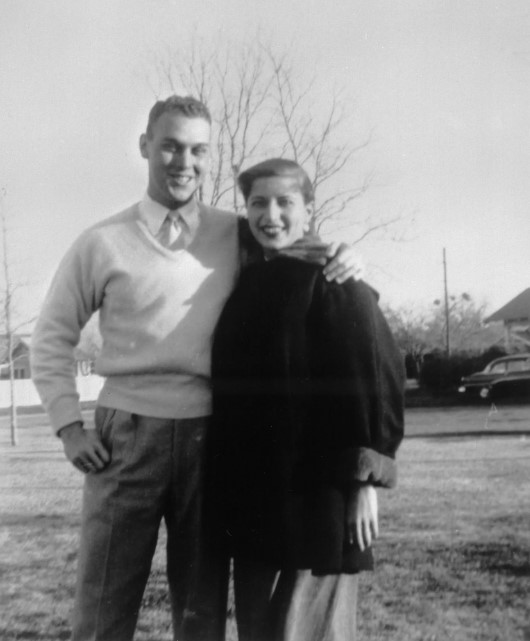
| Ruth Bader Ginsburg Contact Address, Phone Number, Email ID, Website | |
|---|---|
| Phone Number | NA |
| House address (residence address) | Maimonides Medical Center, New York, United States |
| Official Website | NA |
| Snapchat Id | NA |
| Whatsapp No. | NA |
| https://www.instagram.com/ruthbaderg/?hl=en | |
| https://www.facebook.com/RBGmovie/ | |
| Twitch | NA |
| https://twitter.com/notoriousrbg | |
| TicTok Id | NA |
| Email Address | NA |
| Office address | NA |
| Office Number | NA |
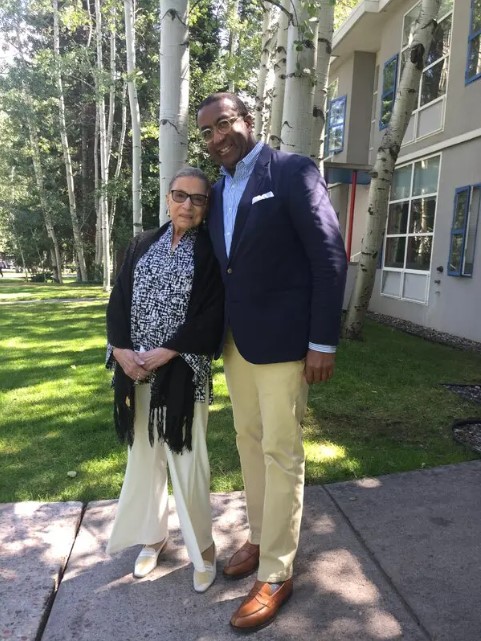
Best Methods to Contact Ruth Bader Ginsburg :
It is simpler to contact Ruth Bader Ginsburg with the below-written contact ways. We have composed the authenticated and verified communications methods data as given below:
1. Ruth Bader Ginsburg TikTok:
Ruth Bader Ginsburg has TikTok Account is on his own title name. He is posting his videos regularly. Follow Ruth Bader Ginsburg on TikTok and also get the latest updates and video recordings from his account.
2. Ruth Bader Ginsburg Instagram:
Instagram is the most used social media platform. You will get a bio of each and a very famous personality over Instagram. Even you can make contact with them through direct messages by using it. Likewise, you can utilize Instagram to see the Ruth Bader Ginsburg Insta profile and his latest pictures.
3. Ruth Bader Ginsburg Facebook:
Facebook is also the most famous social media platform. You can get the bio of each and every famous personality on Facebook. You can also contact them through direct messages. Likewise, you can use Facebook to see Ruth Bader Ginsburg Facebook profile and his new pictures.
4. Ruth Bader Ginsburg Twitter:
It is simpler to find and contact famous personalities by using the popular social media app Twitter. You can tweet using with his twitter id so that he could view your tweet and reply back to you with relevant answers.
5. Ruth Bader Ginsburg Phone Number, House Address, Email
Here we discuss the most common contact methods like the phone number of Ruth Bader Ginsburg , email address, and his fanmail address.
Ruth Bader Ginsburg phone number: NA
Ruth Bader Ginsburg email id: NA
Ruth Bader Ginsburg Fan mail address:
Ruth Bader Ginsburg
US Supreme Court 1 1st St NE Washington, DC 20543
USA
read also: Bill Hader Phone Number, Fanmail Address and Contact Details
